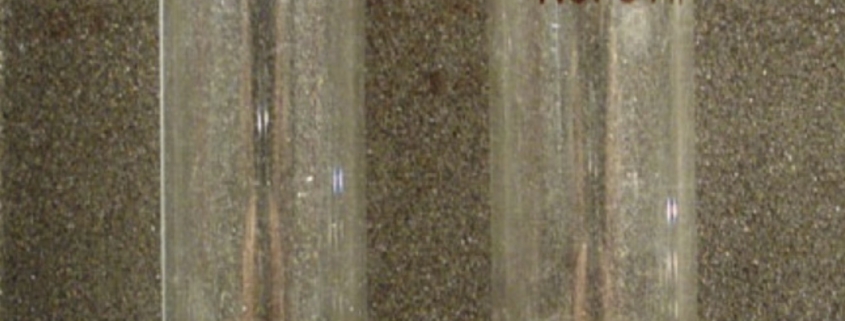I.D. Antarctica 2023 – Week #2 Answer
We’re sorry for the delay in getting you an answer for the mystery fish. The last couple weeks at Palmer Station have been especially hectic!
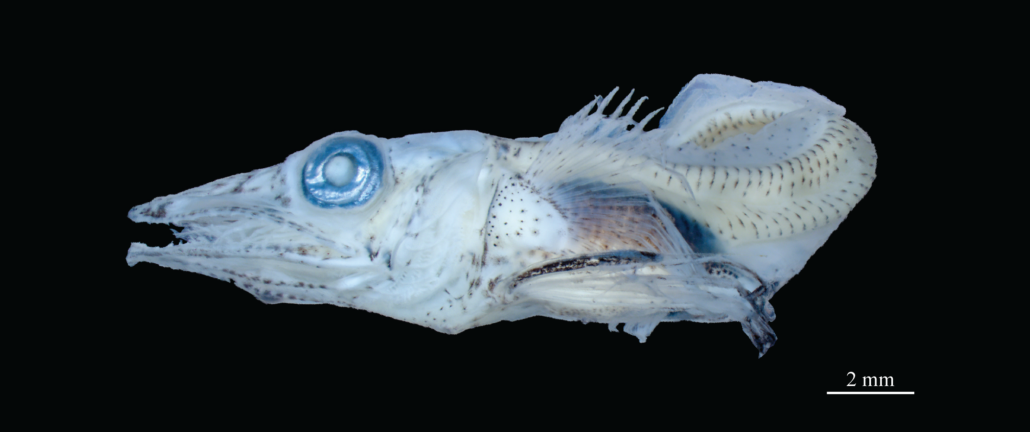
The fish is a larval white-blooded icefish called Chionodraco rastrospinosus (or the ocellated icefish). A few key traits that should have led you to this identification are its circular eyes, visible short, pelvic fin, and dozens of thin vertical stripes that run the entire length of the body.
White-blooded icefishes are a family of fishes only found in the Southern Ocean, their scientific name is Channichthyidae (pronounced Cha-nick-thid-ay). White-blooded icefishes are some of the coolest animals in Antarctica for a few reasons. First of all, they are the only animal in the world that lacks hemoglobin in their blood. Hemoglobin is the part of a red blood cell that transports oxygen molecules from the lungs to the rest of the body using a highway-like system called blood vessels. Cells and organs all need these oxygen molecules to function. The hemoglobin protein is essentially what gives blood its red color.
Below is a photo of icefish blood next to a tube of blood from a closely related group of Antarctic fishes called Nototheniidae.
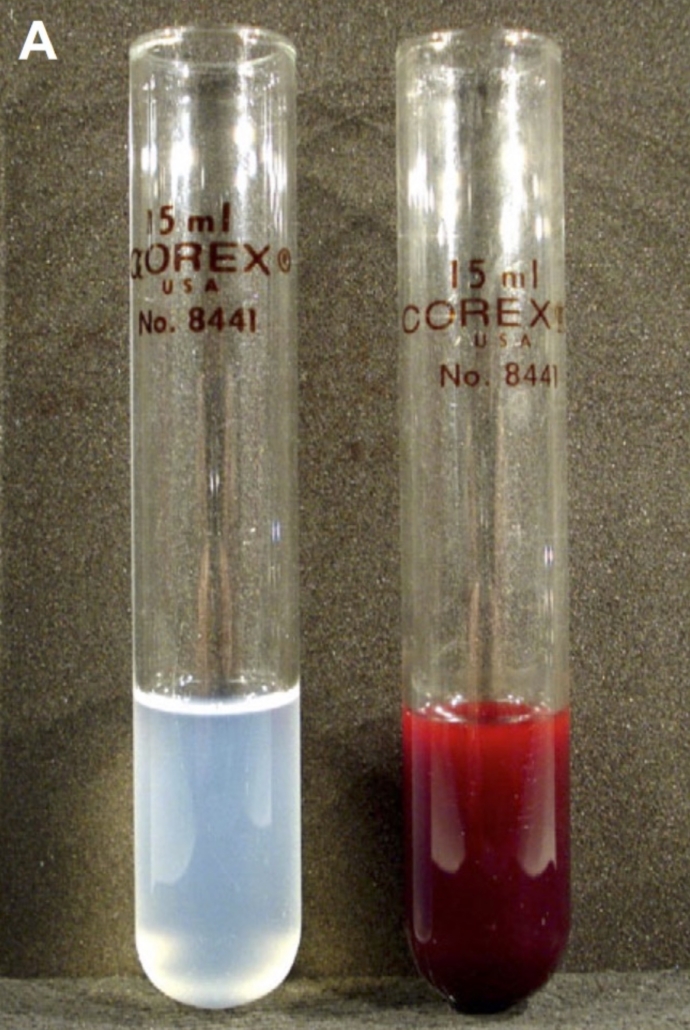
Icefishes have several unique adaptations that allow them to live without hemoglobin. They have very thin skin, so oxygen in the ocean can dissolve directly into their tissues. They also have much larger hearts than other Antarctic fishes, which allows them to force oxygen through their body. Cold water holds more oxygen than warm water, which is one of the reasons these fishes are only found in the Antarctic. They would essentially suffocate if they were exposed to warmer waters. We are especially concerned about the impacts that global warming might have on these fishes.
As you can see in the photograph, white-blooded icefishes can also be ferocious predators, even as larvae!
Below is a photograph of another larval Chionodraco rastrospinosus we collected that had a full stomach. This larva just hatched and is much younger than the C. rastrospinosus you just identified which is why it looks a little differently. After it was euthanized, we dissected it and you can see there is a massive zooplankton (we think another species of krill called Thysanoessa macrura) that is nearly as long as the icefish larva when stretched out!
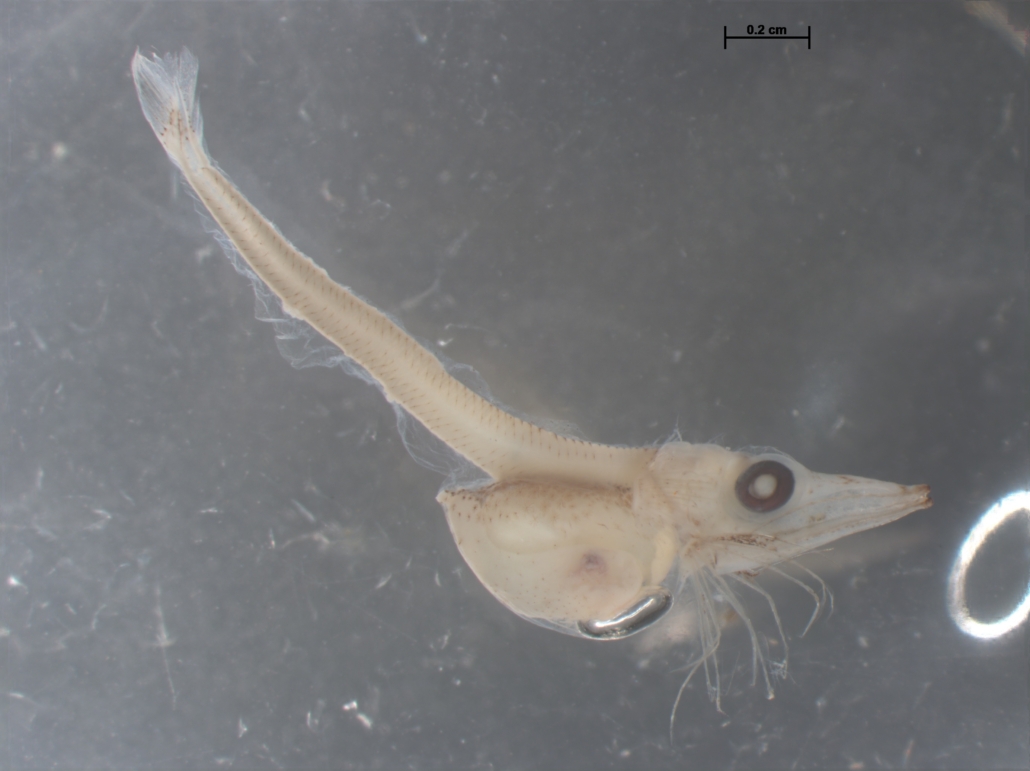
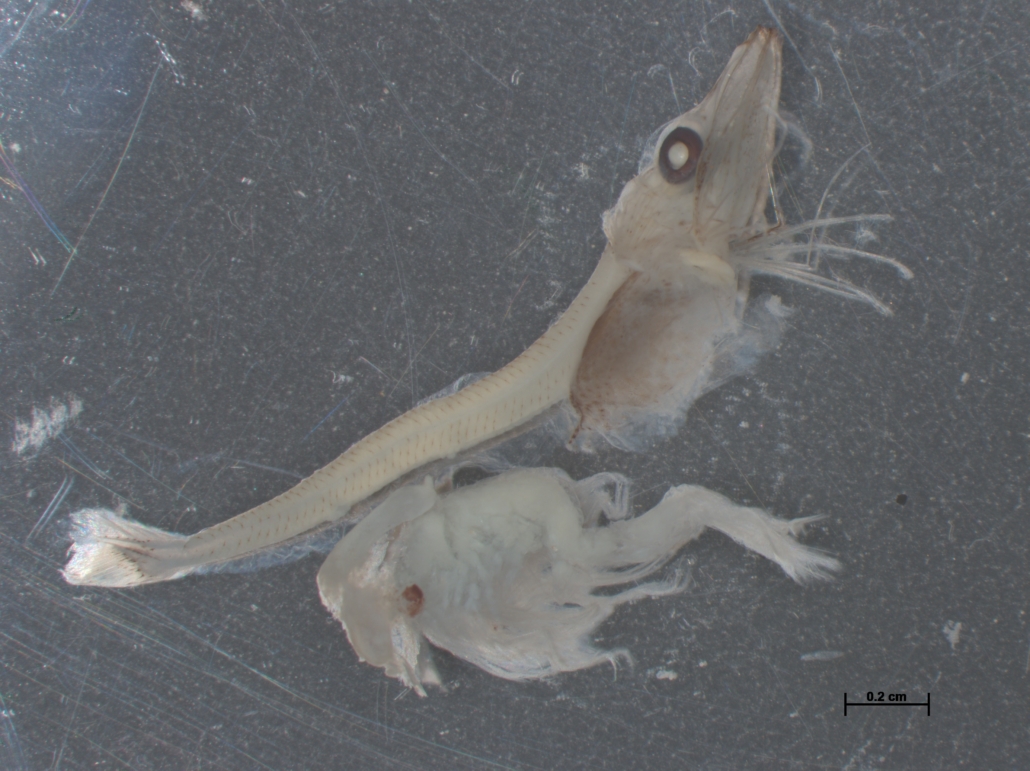
We have another especially predatorial zooplankton for you to identify next… stay tuned!

